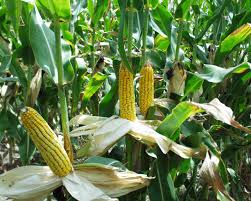Effect of nitrogen rates on critical period for weed control and yield of corn (zea mays)
Keywords:
Corn;Critical period;Nitrogen;Weed interference;YieldAbstract
In order to evaluate the influence of nitrogen (N) rate and weed interference durations on weed dry weight, grain yield, biological yield and harvest index a set of experiments were conducted in the Research Station of the University of Tabriz, Iran, in 2009.The experiment was carried out as split-plot, based on randomized complete block design with three replications. Nitrogen levels (0, 70 and 140 kg/ha) were allocated to main plots and 10 weed interference periods (two sets) to subplots. In the first set, the plots were kept weed-free (from beginning of the growing season) for 14, 28, 42 and 56 days after corn emergence and weeds were allowed to infest the crop, later. In the second set, weed were allowed to infest the crop in the corresponding period and subsequently kept weed free. Results showed that, with increasing weed interference period, grain yield, biological yield and harvest index decreased and weed dry weight increased. Full-season weed infestation decreased grain yield, biological yield. The constructed models showed that in order to prevent a grains yield loss of 5%, weeds must be removed from the field after 9.4, 13.26 and 15.59 days after emergence (DAE), respectively. Corn required 95.33, 87.79 and 80.5 days weed free period to prevent a grain yield loss of 5% under the written nitrogen rates, respectively. An increase in the nitrogen levels enhanced corn tolerance to weed infestation. Furthermore, reductions in the nitrogen level before corn planting may cause the need for more immediate and long period weed control.References
Asghari, J., Cheraghi, G.R., 2002. Determination of critical period of weed control in early and late planted corn. (In farsi). J. Agric. Sci., 5, 285-301.
Cruse, D., Ampony, N., Labrada, R., Merago, A., 1995. Weed management in legume crops: bean, soybean and cowpea. In: “Weed management for development countries". FAO Plant Product. Protect., pp. 283-287.
Evans, S.P., Knezevic, S.Z., Lindquist, J.L., Shaprio, C.A., Blankeship, E.E., 2003a. Nitrogen application influences the critical period for weed control in corn. Weed. Sci., 51, 408-417.
Evans, S.P., Knezevic, S.Z., Lindquist, J.L., Shaprio, C.A., 2003b. Influence of nitrogen and duration of weed interference on corn growth and development. Weed. Sci., 51, 546-556.
Eyherabide, J.J., Cendoya, M.G., 2002. Critical periods of weed control in soybean for full field and in furrow interference. Weed. Sci., 50, 162–166.
Hager, A.G., Wax, L.M., Bollero, G.A., 2002. Common waterhemp (Amaranthus rudis) interference in soybean. Weed. Sci., 50, 607-610.
Hall, M.R., Swanton, C.J., Anderson, G.W., 1992. The critical period of weed control in grain corn (Zea mays). Weed Sci., 40, 441-447.
Hejazi, A., Namjouyan, S., Rahimian-Mashhadi, H., 2000. Critical period of weed control in silage corn. (In Farsi). Agric. Sci. Technol., 15, 80-86.
Kenzevic, S.Z., Evans, S.P., Blankenship, E.E., Van-Acker, R.C., Lindquist, J.L., 2002. Critical period of weed control: the concept and data analysis. Weed Sci., 50, 773-786.
Martin, S.G., Van-Aker, R.C., Friesen, L.F., 2001. Critical period of weed control in spring canola. Weed. Sci., 49, 329-333.
Seem, J.E., Cramer, N.G., Monks, D.V., 2003. Critical weed-free period for sweet potato (Ipomoea batatas). Weed. Tech., 17, 686-695.
Shafagh-Kolvanagh, J., Zehtab-Salmasi, S., Javanshir, A., Moghaddam, M., Dabbagh Mohammadi nasab, A., 2008. Effects of nitrogen and duration of weed interference on grain yield and SPAD (chlorophyll) value of soybean (Glysine max (L.) Merrill.). J. Food. Agric. Environ., 6, 368-373.

Published
How to Cite
Issue
Section
Copyright (c) 2014 A. Hajebrahimi, S. Nasrollahzadeh, J. Shafag-Kolvanagh, P. Aghaei-Gharachorlou

This work is licensed under a Creative Commons Attribution-NonCommercial-NoDerivatives 4.0 International License.



